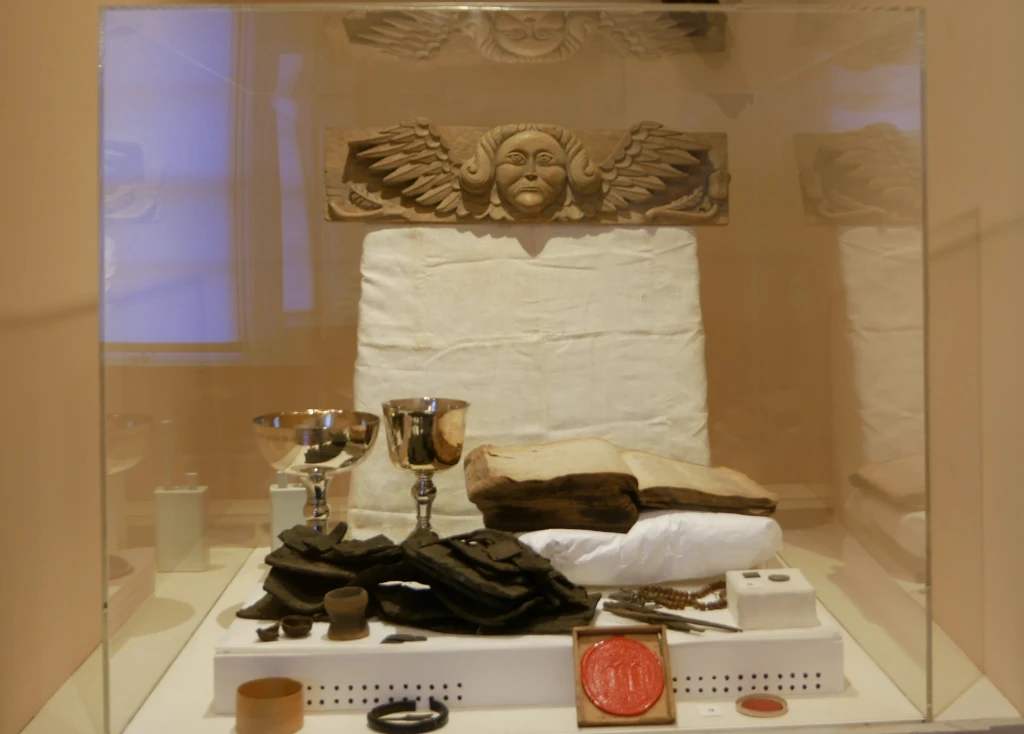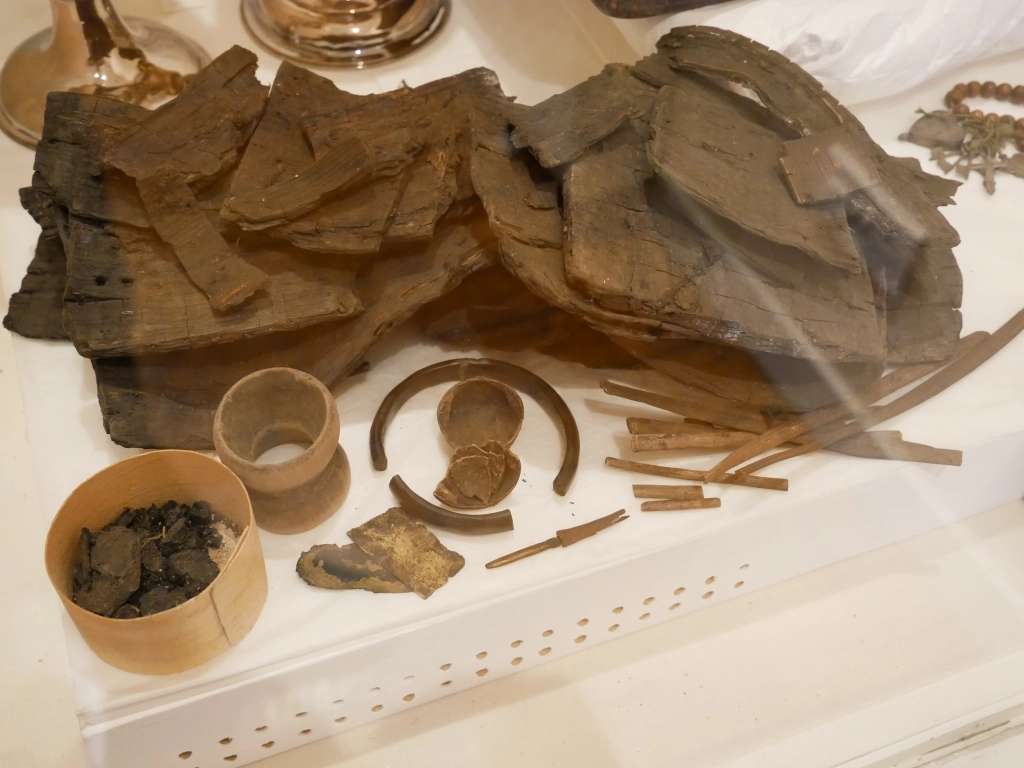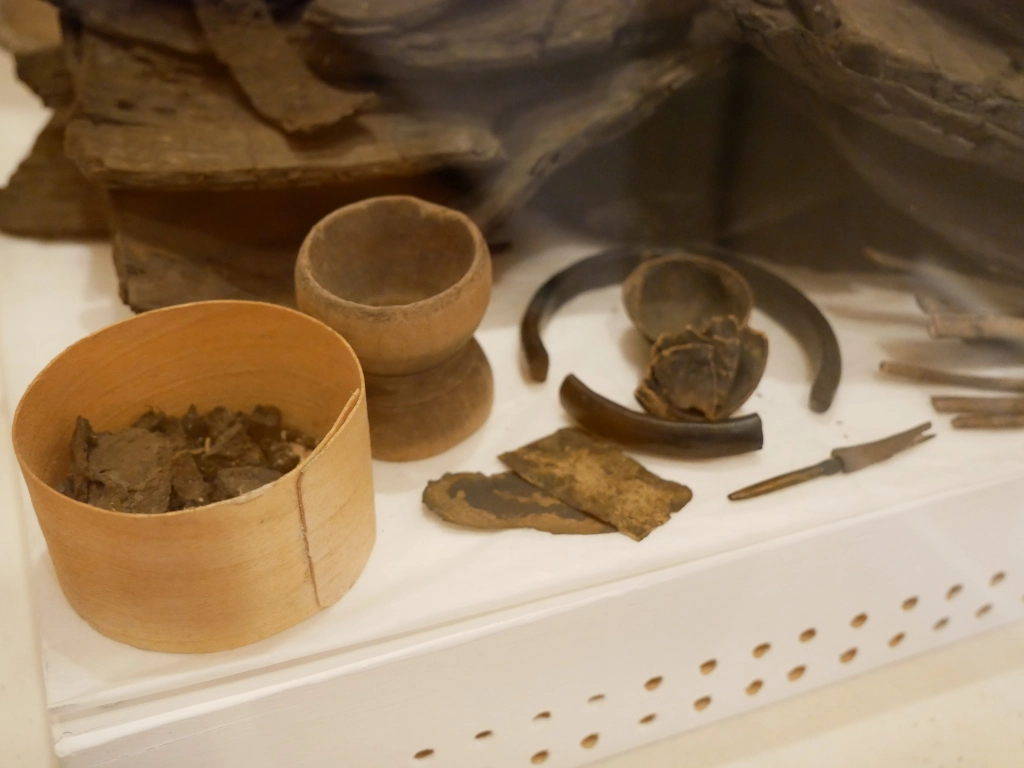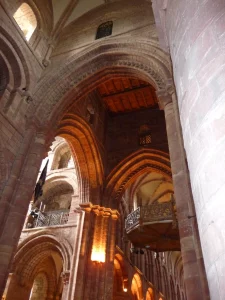The Witch’s Spell Box

[Tom Muir]
In the Merchant Laird’s Gallery in the Orkney Museum there is one of the strangest artefacts that is on display in the museum. Very little is known about it, other than it was discovered buried in peat somewhere near Stromness. It belongs to the Stromness Museum but has been on loan to us for the last 25 years.
It was a wooden box, now in fragments, which contained a number of strange things. It has been interpreted as a ‘witch’s spell box’.

The photograph above is not the clearest, but it does show the remains of the wooden box (the fragments at the back) with its contents at the front.
They are, from left to right, pieces of burnt cake (inside a modern, round container), a lathe-turned wooden eggcup, Two small pieces of copper, a broken and incomplete jet bangle, a walnut shell (inside the bangle), a copper pin or skewer with a wooden handle, several wooden pins.

From what time period the spell box dates from is unknown, as is its uses. There are many people out there who know more about witchcraft than me and who will know what these sorts of things could be used for. Were the spells cast for good or evil? Was this the kit of someone who practiced magic to help or hurt people and animals?
On Display

he witch’s spell box is displayed in the Merchant Lairds Gallery, which deal mostly with the 18th century. The reason that it is displayed in the church section is because it was the responsibility of the church in the early 17th century to root out witchcraft and to bring witches to trial.
Around 72 people were tried for witchcraft in Orkney, although recent research puts the figure at 80. Of the 72 on record only nine of them were male.
They were mostly poor women living on the outskirts of society. Some traded on their neighbours fear and superstitions in order to get offerings of food, but folk magic was common in those days and practiced by everyone. Rituals had to be gone through for protection against evil or bad luck. In the same gallery is a glazed, earthenware bottle, known as a ‘bellarmine’, which was found buried under the floor of a house in Rousay and was most likely a ‘witches bottle’, used as a protection from evil.
To this day people all over the country still throw salt over their left shoulder if they spill it and statements like “I’ve been lucky so far” is followed by “touch wood” and the physical act of touching something made of wood. Walking under ladders and Friday the 13th are still thought of as unlucky.

St Magnus Cathedral is unique as being a cathedral with its own dungeon. A cell known as ‘Marwick’s Hole’ is at the south crossing. Originally the opening that we see today was a window, but an extension to the crossing blocked it up. It is a bottle dungeon, with an arched floor, like the bottom of a champagne bottle. This was where those accused of witchcraft were held before their trial and execution.
In 2019 a memorial to the Orkney ‘witches’ was placed at the Gallow Ha’ in Kirkwall, now a traffic island at the head of the Clay Loan. This site, as the old name suggests, was the site of public executions, which included the Orkney ‘witches’. The memorial was the work of Dr Ragnhild Ljosland and Helen Woodford-Dean, who brought together local heritage, church and community groups to create a permanent memorial to those who were killed.
Learn more about the Orkney Witches on the Orkney Communities Website.
